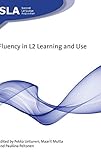Fluency in L2 Learning and Use / ed. by Pekka Lintunen, Maarit Mutta, Pauliina Peltonen.
Material type: TextSeries: Second Language AcquisitionPublisher: Bristol ; Blue Ridge Summit : Multilingual Matters, [2019]Copyright date: ©2019Description: 1 online resourceContent type:
TextSeries: Second Language AcquisitionPublisher: Bristol ; Blue Ridge Summit : Multilingual Matters, [2019]Copyright date: ©2019Description: 1 online resourceContent type: - 9781788926300
- 9781788926317
- Fluency (Language learning)
- Fluency (Language learning)
- Second language acquisition -- Study and teaching
- LANGUAGE ARTS & DISCIPLINES / Linguistics / Psycholinguistics
- L2 assessment
- L2 fluency
- L2 pedagogy
- L2 use
- SLA
- fluency in language learning and use
- fluency
- language use
- listening skills
- reading skills
- second language acquisition
- second language assessment
- second language learning and use
- second language learning
- second language teaching
- speaking skills
- writing skills
- 407.1 23
- P53.4115 .F58 2020
- P53.4115 .F58 2020
- online - DeGruyter
| Item type | Current library | Call number | URL | Status | Notes | Barcode | |
|---|---|---|---|---|---|---|---|
 eBook
eBook
|
Biblioteca "Angelicum" Pont. Univ. S.Tommaso d'Aquino Nuvola online | online - DeGruyter (Browse shelf(Opens below)) | Online access | Not for loan (Accesso limitato) | Accesso per gli utenti autorizzati / Access for authorized users | (dgr)9781788926317 |
Frontmatter -- Contents -- Contributors -- Preface -- 1. Defining Fluency in L2 Learning and Use -- 2. What is Fluency? Learner Perceptions of the Concept -- 3. Cognitive Fluency in L2: What Inaccuracies Can Reveal about Processing and Proficiency -- 4. Fluency in L2 Listening -- 5. L2 Fluency and Writer Profiles -- 6. Fluency in English as a Lingua Franca Interaction -- 7. Fluency in Sign Language -- 8. Gestures as Fluency-enhancing Resources in L2 Interaction: A Case Study on Multimodal Fluency -- 9. Fluency in Language Assessment -- 10. Fluency in Evaluating and Assessing Translations -- 11. The Effects of Songs on L2 Proficiency and Spoken Fluency: A Pedagogical Perspective -- 12. Synthesising Approaches to Second Language Fluency: Implications and Future Directions -- Index
restricted access online access with authorization star
http://purl.org/coar/access_right/c_16ec
This book brings together theoretical and empirical approaches to second language (L2) fluency and provides a state-of-the-art overview of current research on the topic. The strength of the volume lies in its interdisciplinarity: the chapters approach fluency from non-traditional starting points and go beyond disciplinary boundaries in their contributions. The volume includes chapters investigating fluency from an L2 perspective and integrates perspectives from related fields, such as psycholinguistics, sign language studies and L2 assessment. The book extends the common foci and approaches of fluency studies and offers new perspectives that enable readers to evaluate critically existing paradigms and models. This encourages the development of more comprehensive frameworks and directs future L2 fluency research into new areas of L2 learning and use.
Mode of access: Internet via World Wide Web.
In English.
Description based on online resource; title from PDF title page (publisher's Web site, viewed 25. Jun 2024)


